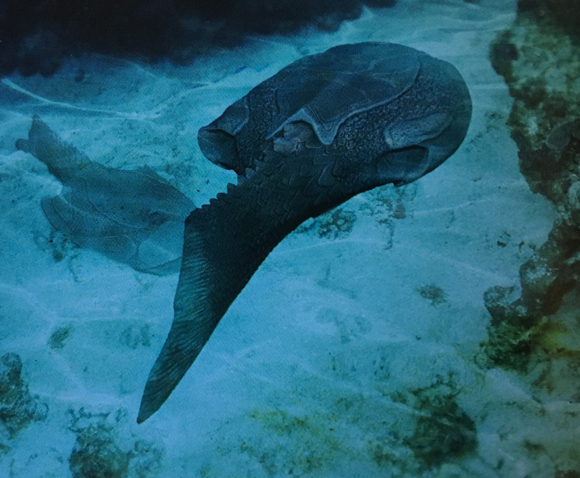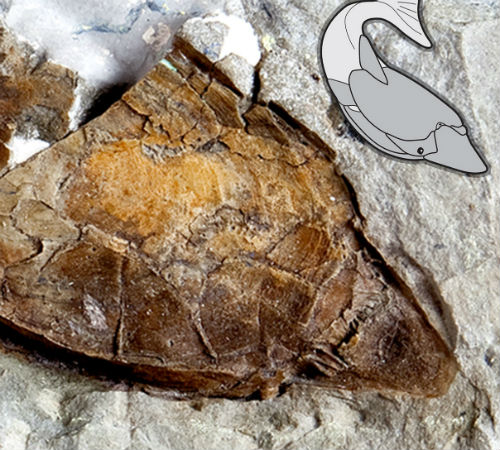How Did We Get Our Bones? That’s a Wonderful Question
Tracing the Origins of the Vertebrate Skeleton
Our skeleton is very special, the evolution of a rigid internal skeleton (bones), was an extremely significant development in the history of life on Earth. However, how hard, internal skeletons evolved has been the subject of much debate amongst palaeontologists. However, thanks to research undertaken by scientists at Manchester and Bristol Universities in collaboration with the technicians at a synchrotron light source based in Switzerland, we might have a better understanding of how we came to be.
The Origins of Our Skeleton
All living vertebrates have skeletons built from four different tissue types: bone and cartilage (the main tissues that human skeletons are made from), and dentine and enamel (the tissues from which our teeth are constructed). These tissues are unique because they become mineralised as they develop, giving the skeleton strength and rigidity.
Primitive fish were the first to develop a mineralised skeleton and one group of early fishes, the heterostracans, has attracted a lot of interest from scientists as they try to work out the evolutionary processes that took place. The heterostracans, were a group of heavily armoured, jawless fishes that evolved during the Early Silurian. These fish, which are mostly associated with marine and estuarine deposits, had two plates, one on the top of the body and one underneath, they served to help protect the animal from attack and might have had a secondary function to help keep the body stiffened. These fish also had large scales on their bodies too.
A “Swimming Table Tennis Paddle” – A Life Restoration of Drepanaspis – An Early Devonian Heterostracan

The Primitive Bone-like Tissue Aspidin
Earlier research had identified that the surface scales and broad plates of these primitive fishes had enamel-like tops over a core of dentine, essentially the same material that forms our teeth. Supporting these structures was a layer of sponge-like material called aspidin. Aspidin is bone in its earliest mineralised form. It is thought that the very first basal, internal skeleton provided an anchor to support the armour that was on the outside of the body. In this new study, the scientists used synchrotron X-ray tomographic microscopy to reveal the nature of aspidin.
Lead author of the paper, published in the journal “Nature Ecology & Evolution”, Dr Joseph Keating (Manchester University), explained:
“Heterostracan skeletons are made of a really strange tissue called “aspidin”. It is crisscrossed by tiny tubes and does not closely resemble any of the tissues found in vertebrates today. For 160 years, scientists have wondered if aspidin is a transitional stage in the evolution of mineralised tissues.”
Errivaspis – A Member of the Heterostraci from the Early Devonian

Picture credit: Keating et al
Ruling Out Other Theories
Scientists had been aware of the spongy nature of aspidin. However, they were unable to work out what might have filled the pores and spaces in the material, using traditional methods of study. Knowing what filled these unmineralised spaces would provide the information needed to help demonstrate the role that aspidin played in the evolution of back-boned animals.
Four theories regarding what filled these spaces had been put forward:
- The spaces housed cells, like the osteoblasts and osteocytes that are found in living bones.
- The spaces were filled with fibres made from proteins such as collagen.
- The spaces were filled with dentine.
- The spaces were filled with a mixture of dentine and bone.
The team showed that these “gaps” in the aspidin represented the location of bundles of collagen (2). These “gaps” housed the same sort of protein that is found in our skin and bones (in fact collagen is the most abundant type of protein found in our bodies).
Aspidin is the Earliest Evidence of Bone in the Fossil Record
These findings enabled Dr Keating to rule out all but one theory for the tissue’s identity, proving that aspidin is the earliest evidence of bone in the fossil record.
Co-author of the study, Professor Phil Donoghue (University of Bristol), who has done much to reveal the true anatomical nature of the heterostracans, stated:
“These findings change our view on the evolution of the skeleton. Aspidin was once thought to be the precursor of vertebrate mineralised tissues. We show that it is, in fact, a type of bone, and that all these tissues must have evolved millions of years earlier.”
The team suggest that the collagen bundles form a scaffold which permits minerals to be deposited. Aspidin is acellular dermal bone, so one question is answered but it gives rise to a host of others. For example, if all the skeletal tissue types associated with vertebrates were present in the heterostracans, then these structures and materials must have evolved earlier than expected.
The scientific paper: “The Nature of Aspidin and the Evolutionary Origin of Bone” by J. Keating, C. Marquart and P. Donoghue published in Nature Ecology & Evolution.
Everything Dinosaur has an award-winning website.
Visit the Everything Dinosaur website: Everything Dinosaur.

